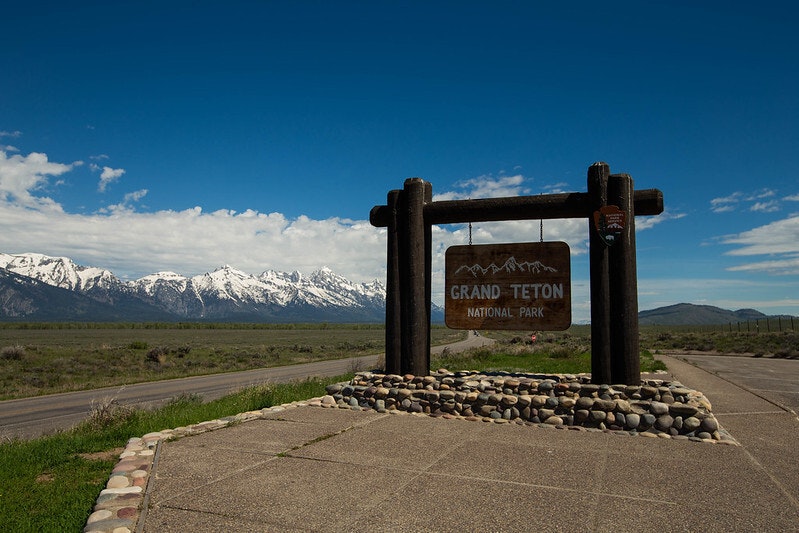Grand Teton National Park is beginning to open its seasonally-operated facilities for the summer season.
The park is working to protect employee and visitor health while meeting the National Park Service mission of providing for visitors and protecting park resources, officials said. Most visitor facilities and services will be open with restrictions to limit the number of people in the areas and provide for social distancing.
The Craig Thomas Discovery and Visitor Center will open for the season on Saturday and will be open daily from 8 a.m. to 5 p.m. The Teton Park Road and Moose-Wilson Road will also open to vehicles on Saturday.
The Colter Bay Visitor Center will open May 7 and will also operate 8 a.m. to 5 p.m.
Grand Teton is implementing preventive measures and mitigation actions to reduce the spread of infectious disease. The park is working with federal, state, and local public health authorities to closely monitor the coronavirus pandemic and will adjust operations as needed.
Park visitor centers will be open with limited capacity visitor services. The park is also working in collaboration with concession operators to safely provide visitor services for the 2021 season.
Visitors are encouraged to plan ahead and prepare for upcoming summer trips to the park. They are also encouraged to do their part and recreate responsibly.
How to recreate responsibly in Grand Teton:
- Plan ahead and know you will have a place to stay overnight. Reservations are required for all campgrounds in Grand Teton National Park. Camping in the park is only allowed in designated sites within designated campgrounds. Camping is not permitted along roadsides, at overlooks, pullouts, trailheads or other parking areas.
- Park visitors will be responsible to take preventive actions as they enjoy the park. To protect the health of those who live, work, and visit national parks and facilities, face masks are required in all National Park Service buildings and facilities. Masks are also required on National Park Service-managed lands when physical distancing cannot be maintained, such as hiking trails, overlooks, and parking areas.
- Black and grizzly bears are active in Grand Teton, including in developed areas. Be alert, make noise when hiking, hike in groups of three or more and carry bear spray and know how to use it. Federal regulations require that you stay at least 100 yards away from bears and wolves and 25 yards away from all other wildlife. View wildlife through a telephoto lens, spotting scope, or a pair of binoculars. Give wildlife room, use your zoom. Food storage is required. All food, garbage, pet food, coolers, food containers (empty or full) and cookware (clean or dirty) must be stored in a hard-sided vehicle with the windows rolled up or in a bear-resistant food locker when not in immediate use.
- Dispose of trash properly. Follow Leave No Trace principles by packing out what you bring in, including all trash, masks, and left-over food. Recycling is available throughout the park.
- Dogs are not permitted on trails, pathways or inside visitor centers. In addition, dogs are prohibited from swimming in any park waters. Dog owners are required to use a leash no longer than six feet in length and are required to clean up after their dogs. A good rule of thumb is that a pet may go anywhere a car may go including roads, road shoulders, campgrounds, picnic areas and parking lots.
- Help prevent wildfires. Campfires are limited to designated and installed fire rings and/or grills. All campfires should always be attended to. Visitors could be held liable for suppression costs if their campfire becomes a wildfire. All campfires must be completely extinguished before leaving a site. Campers and day users should have a shovel on hand and a water bucket ready for use. Soak, stir, feel, repeat. Make sure your campfire is “dead out” and cold to the touch before departing.
- Slow down and be vigilant while driving in the park, especially at dawn, dusk and at night when visibility is reduced. Wildlife is often active near park roadways and can cross the roads unexpectedly. Give wildlife a brake. Obey posted speed limits and maintain a safe following distance from other vehicles.





